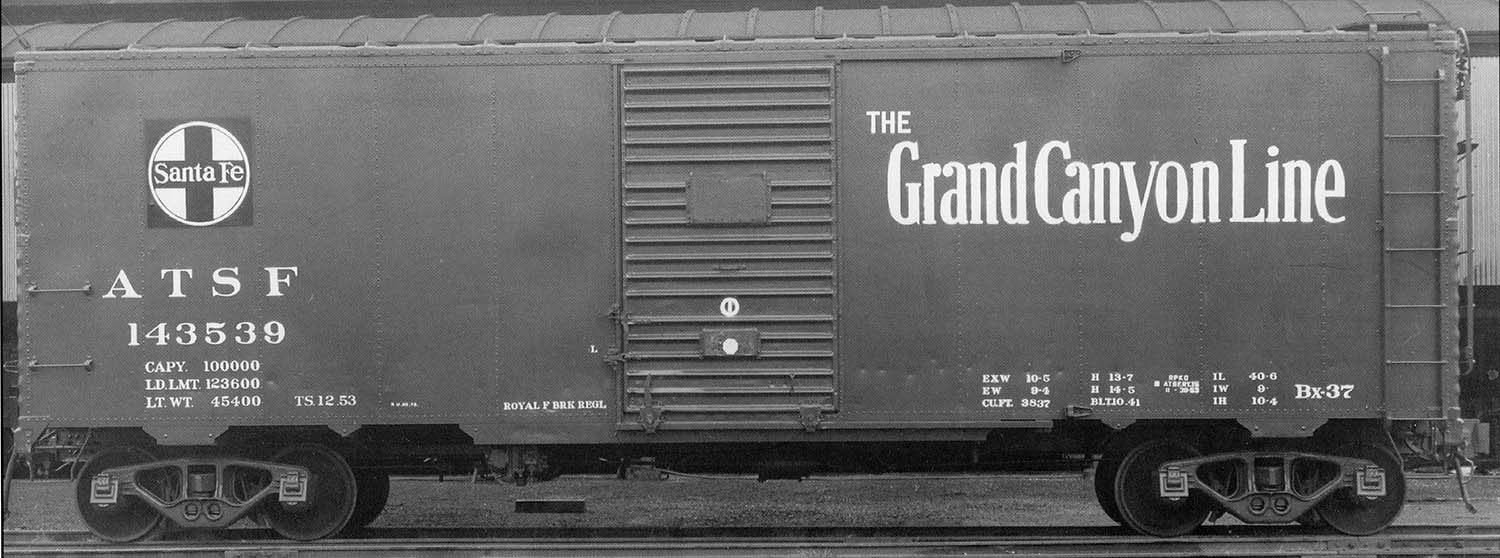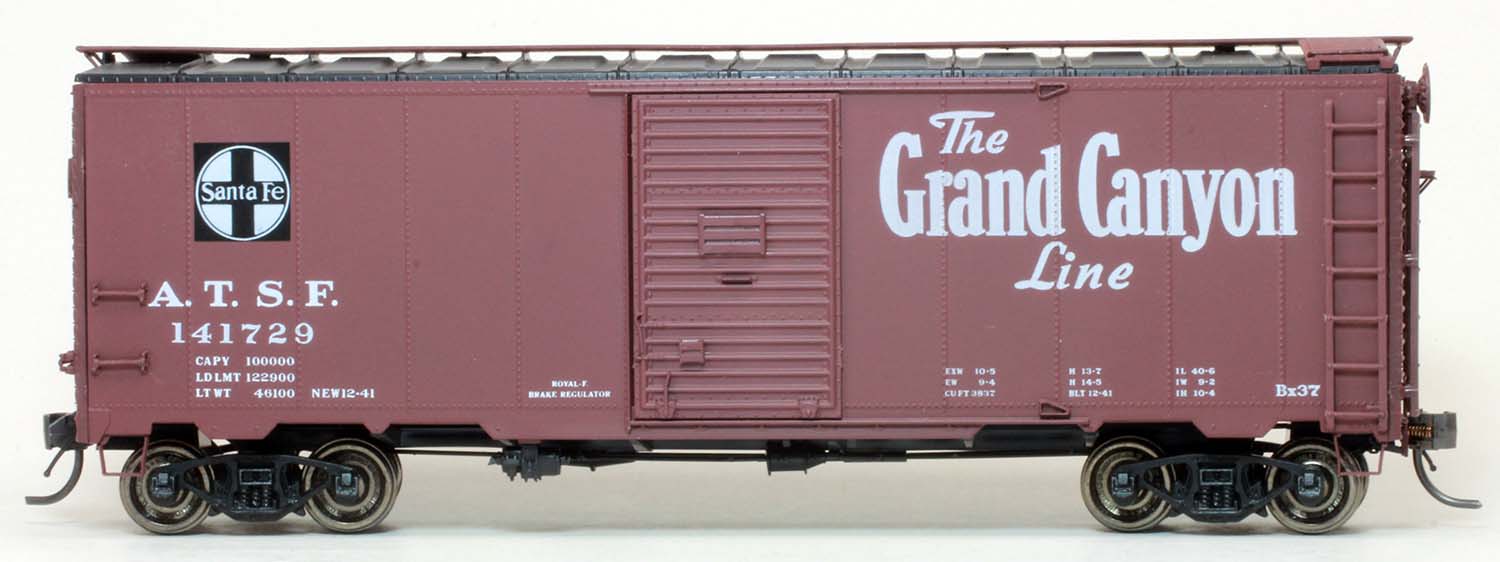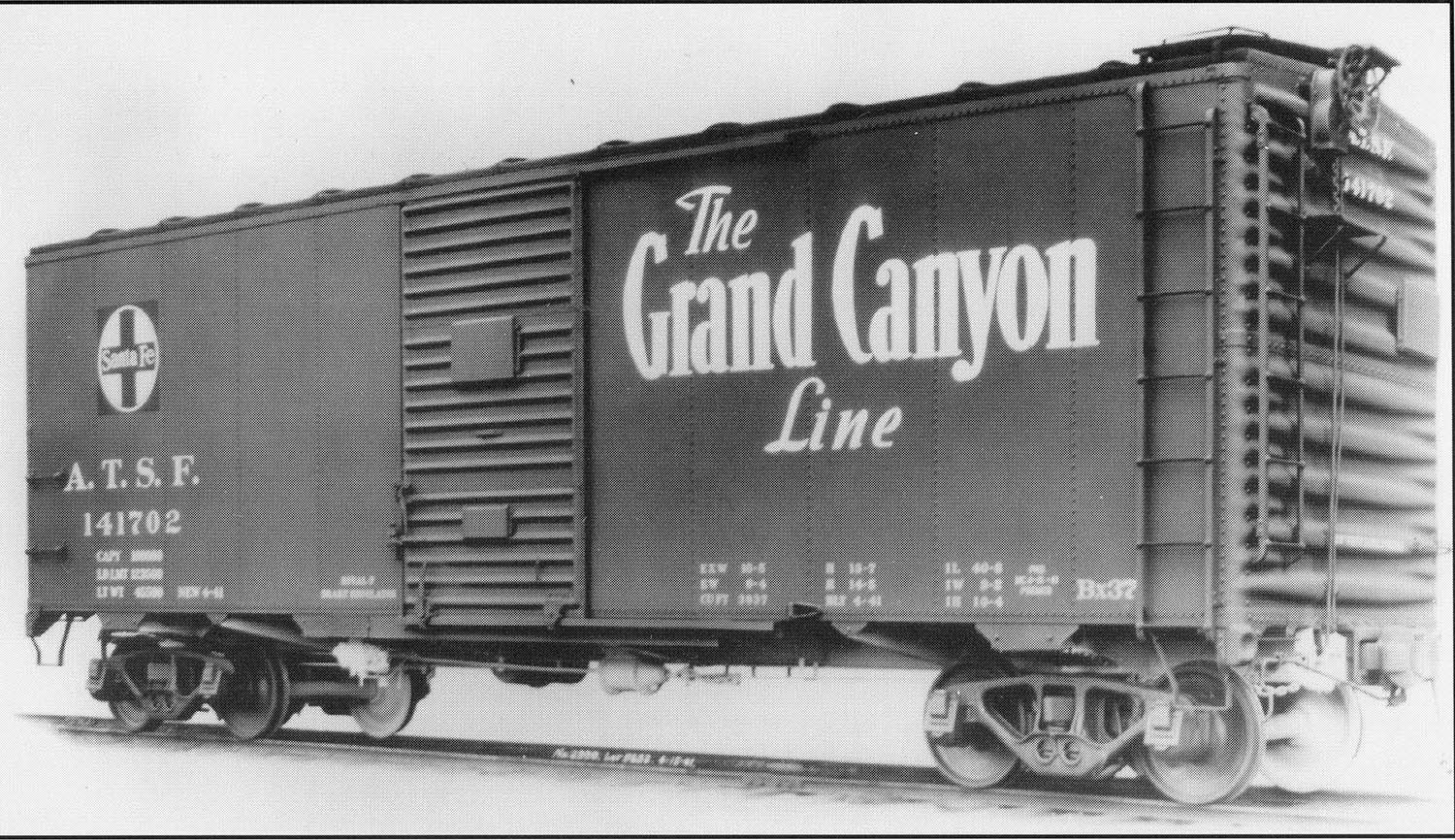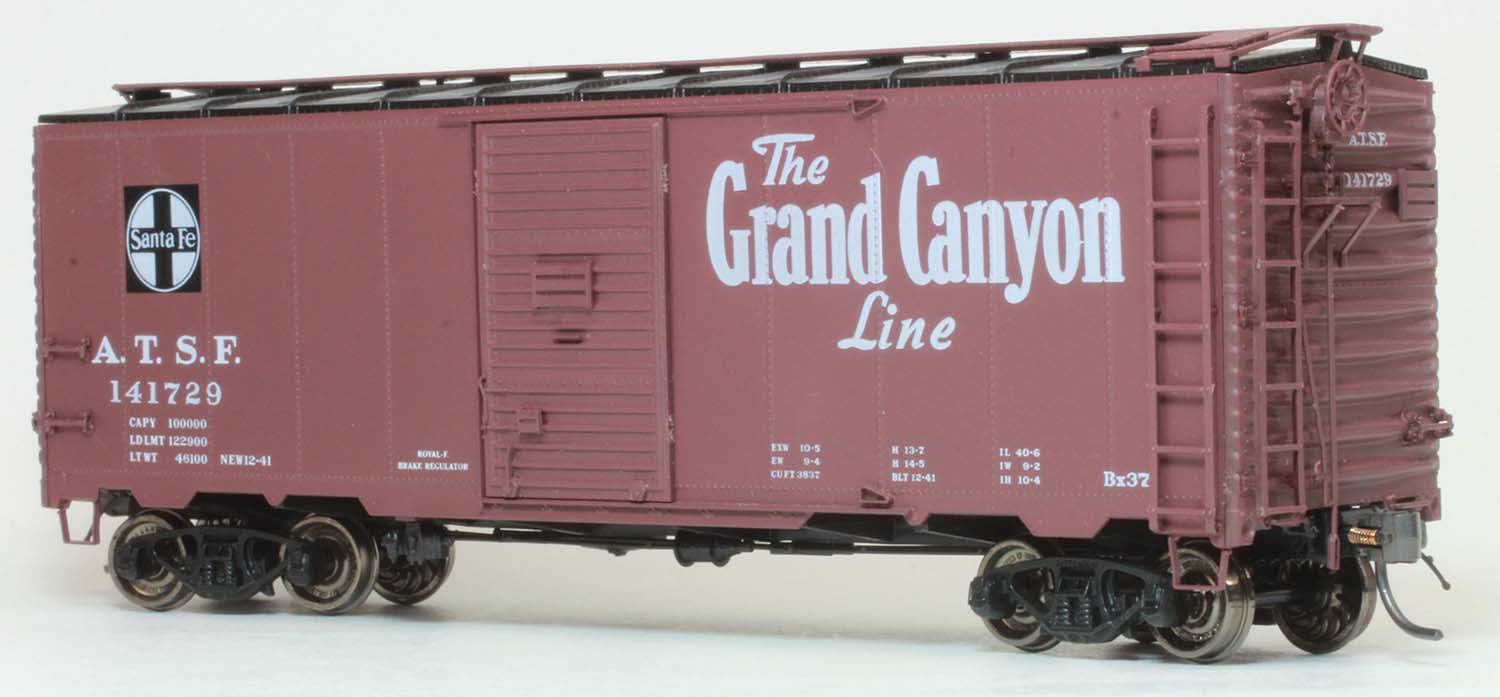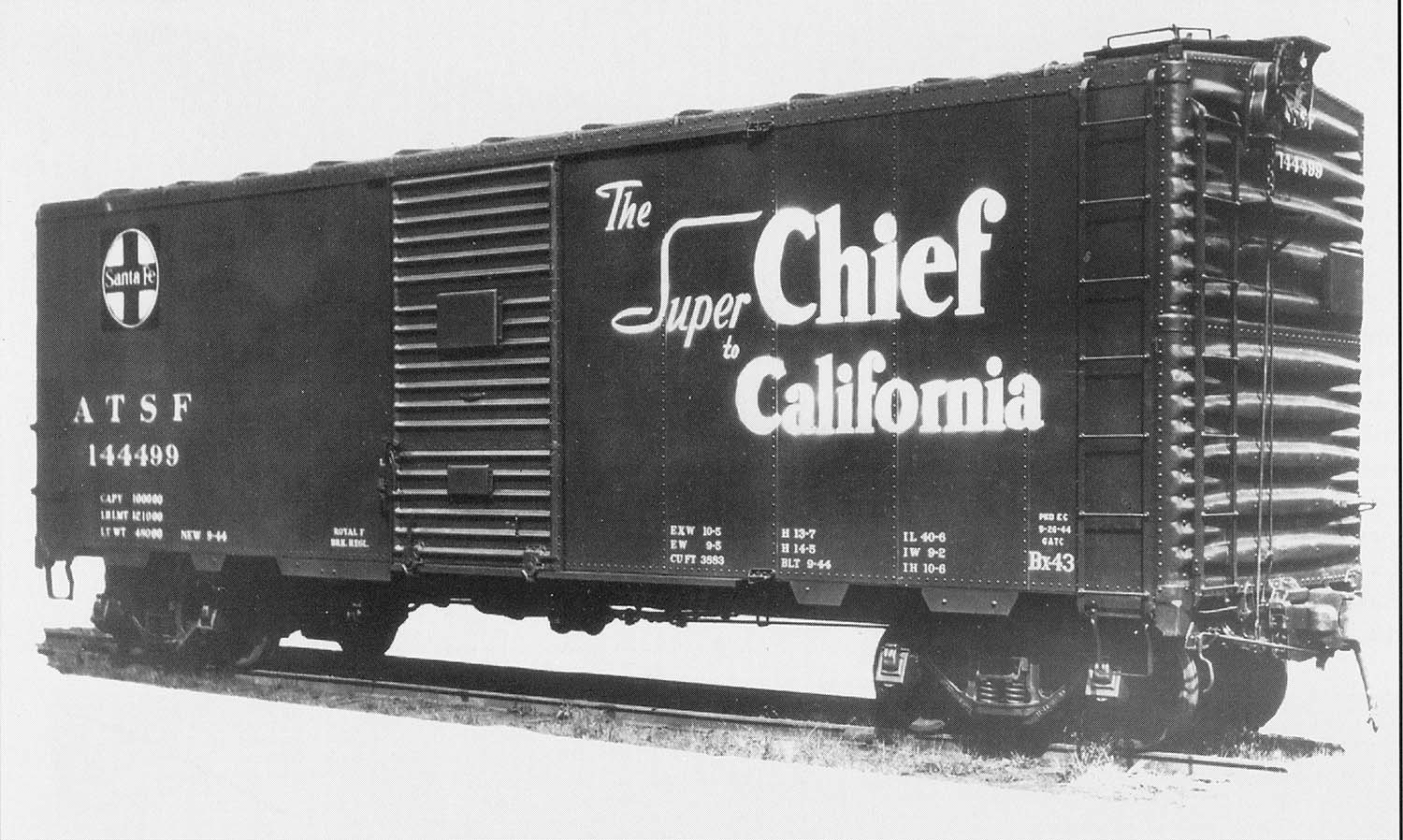|
Intermountain 10'6" Modified AAR Boxcar Updated 8-1-15 In 1941 and 1942 the Santa Fe purchased 5010 cars with AAR standard underframes from Pullman. These BX-37s were assigned 141301-144310 in 1941 and 145500-147499 in 1942. This was the largest class of 40' box cars. they had 10'4" inside height, 10 panel riveted sides, 6/7/6 Youngstown doors, W-section 5/5 Dreadnaught ends, raised panel roof, wod running boards, AAR underframe, AB brakes, and Ajax geared brakes. The 1941 cars had riveted underframes while the 1942 cars had welded underframes. The brake reservoir was mounted transversely. The 500 BX-43s were produced in 1944 from General American and were almost identical to the BX-37. These had 10'6" inside height. There is an extensive article with photos of the BX-34, 37, and 43 class in the Railway Prototype Cyclopedia, Vol. 25, p. 1-31 Intermountain Railway sells what it calls a 10'6" Modified AAR Boxcar. It comes marked as both BX-43 and BX-37. However, the 37 and the 43 use the same body mold, and they were nearly identical cars.
The model of the BX-37 has the saw tooth bottom of the sides correct except at the very end of the sides. It should be level from just beyond the bolster to the end of the car.The BX-43 had larger plates over the ends of the crossbearers but did have the lower plate at the end. Therefore both models are compromises on these features. The BX-37 ladders on the sides are incorrect. The left ladder side rail should reach to the roof, which it does not. Ladders on the side of the 43 are also incorrect, as both side rails should reach to the roof. The ladder rounds are also too close together on both models. The end ladders on the BX-37 had 6 rounds (rungs) starting higher and using the lower grab as a first step. The BX-43 ladders had 7. The models have 7, so incorrect for the BX-37. Because of the way the end ladders are cast, you can't simply cut off the lower round without also removing one (two?) of the brackets that holds the ladder to the car body. The grabs on the ends and left end of the sides are terribly oversize. They should be 5/8" rod but look enormous. For some reason the on-line photos of the BX-37 look much better than those of the BX-43. Doors are correct on both models, but the lower tack boards are about half the size of the prototype on both cars. The fact that the two tack boards on each door are wood has been over-emphasized as if there was a 1-1.5" space between them. Trucks on the 43 are what Richard Hendrickson called Intermountain 40061 ASF (Note: this is no an ASF A-3 though it has sometimes been identified as such), and they look good for the BX-43 cars. The BX-37 comes with the same trucks. The Prototype BX-37 came with three different trucks, depending on the production schedule: National B-1, ASF Double-Truss/U-section spring-plankless (the trucks supplied, and correct for the number shown on the website), and Barber S-2. Height: The BX-37 had 10'4" inside height while the BX-43 had 10'6" inside height. The models are the same. It is nearly impossible to discern the 2" difference in scale size. Brake reservoir: on the BX-37 it was transverse, while on the BX-43 it was longitudinal. The model is longitudinal. Paint. Lettering appears generally to be accurate. However, the web photo of BX-43 144574 has the straight line map too close to the door with the door almost covering part of it. A photo of 144499 on page 188 of the Society Box Car book shows how it should look. When making a purchase be sure to remember the time frame of the slogans. Straight line map with "ship" was the most common map from late 1940 - April, 1947. Ship and Travel became the standard in March, 1947, though the maps lasted for years until repainted. The photo on the web of BX-37 with the Ship and Travel logo matches the reweigh date of 9-49 stenciled on the car. Conclusion: the Intermountain models are identical with different lettering. Put their BX-37 and BX-43 side by side and you will not see a difference. If you are a rivet counter there are a number of errors to correct. Steve Sandifer |








